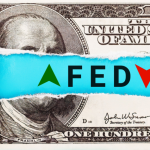Certificates of deposit typically compound daily or monthly
Fact checked by Timothy LiReviewed by Katie MillerFact checked by Timothy LiReviewed by Katie Miller
Certificates of deposit (CDs) pay compound interest on the interest you’ve already earned. In this article, we’ll look at the difference that compound interest makes and help you find a CD with the best interest rate.
Key Takeaways
- Certificates of deposit (CDs) typically pay compound interest, which means your earned interest also earns more interest
- CDs generally compound daily or monthly
- The annual percentage yield (APY) that CD issuers display takes compounding into account
- APY is the number to look for when you compare a new CD

Investopedia / Julie Bang
Understanding CD Compound Interest
CD compound interest is the interest you earn on the interest you’ve already earned on your principal (your initial deposit). Most CDs compound either daily or monthly. The more frequent the compounding, the more interest your interest will earn.
How often your CD compounds is reflected in the annual percentage yield (APY) that the CD’s issuer promises when you open a CD. The APY’s calculation assumes you will leave your interest in the CD for its entire term. Some CDs allow you to take periodic interest disbursements, such as monthly or quarterly. In that case, money won’t fully compound.
Other accounts typically featuring compound interest are high-yield savings accounts and money market accounts. To see which savings account is best for you, compare the APY offered by each account, along with any minimum amount requirements or restrictions.
CD Compound Interest Example
Suppose you put $10,000 into a one-year CD that pays 1% annual interest. If this were simple interest (not compounded interest), you would have $10,000 + (1% x $10,000) or $10,100 when your CD matures. That’s a total return of $100.
Now, let’s say that the account pays compound interest and is compounded monthly. To work out the return with compound interest:
- First, we find the monthly interest rate. That’s 1% divided by 12 months, or 0.0833%.
- After the first month, you would have $10,000 + (0.0833% x $10,000), or $10,008.33.
- In the second month, because of compound interest, you’ll earn 0.0833% on this new total. So that’s $10,008.33 + (0.0833% x $10,008.33), or $10,016.67.
- Do this 12 times, once for each month of the year.
- You’ll end up with $10,100.46, after earning interest of $100.46.
As you can see, you get a more significant return with compound interest than you would with simple interest. However, you’ll also see that the difference is minimal in this example—just 46 cents.
If the interest rate were higher, the difference would be greater. For example, a $10,000 one-year CD paying 5% interest and compounding monthly would return $511.62, against $500 for one paying 5% simple interest.
Similarly, the difference that compound interest makes will be greater the longer you leave your money in the CD. A $10,000 five-year CD earning 5% would collect $2,833.59 in compound interest by the end of its term, while a similar CD earning 5% simple interest would return just $2,500.
Banks and credit unions pay varied interest rates, even on CDs of the same term. The best-paying CDs may offer three to five times higher rates than the industry average. So shopping around can be well worth your while.
Finding the Best CD Rate
While compound interest is important, you don’t have to do the math for every CD you see because CD rates are generally quoted as an APY.
The APY takes the effect of compounding into account, whether it is monthly or daily. Suppose you see a one-year, fixed-rate CD compounded monthly with an advertised APY of 1%. Your provider will calculate the interest paid monthly so that at the end of the year, you’ve made exactly 1%.
This makes comparing CDs much easier. It also allows the bank or credit union to quote a more impressive return (in our example, 1% APY rather than 0.0833% monthly).
Frequently Asked Questions (FAQs)
Is the Interest on CDs Federally Insured?
The Federal Deposit Insurance Corporation (FDIC) and National Credit Union Administration (NCUA) insure CDs at participating banks and credit unions. Their coverage is capped at $250,000 per depositor, per institution, and per ownership category (such as a single or joint account). When interest is added to your CD balance, it gains insurance protection as long as you are within the limits.
How Is the Interest on CDs Taxed?
Unless your CD is in an individual retirement account (IRA) or another tax-deferred account, your earned CD interest is considered income and taxed at the same rate as your ordinary income. According to the Internal Revenue Service (IRS), “If you buy a CD with a maturity of more than 1 year, you must include in income each year a part of the total interest due.” If the amount is at least $10, the bank or credit union should send you a 1099-INT form each year showing the interest you need to report on your tax return.
Why Are CD Rates So High?
CD rates are related to the federal funds rate set by the Federal Reserve. The Federal Reserve has kept the federal fund rate high in recent years to slow spending and decelerate inflation’s impact on the U.S. economy. When it starts lowering rates again, CD rates will eventually follow.
The Bottom Line
Certificates of deposit (CDs) generally pay compound interest, meaning that the interest your CD earns will also earn interest. CD accounts typically compound daily or monthly. Compound interest is reflected in the annual percentage yield (APY) the CD’s issuer quotes you, and APY is the number you should use when comparing CDs.
Read the original article on Investopedia.



